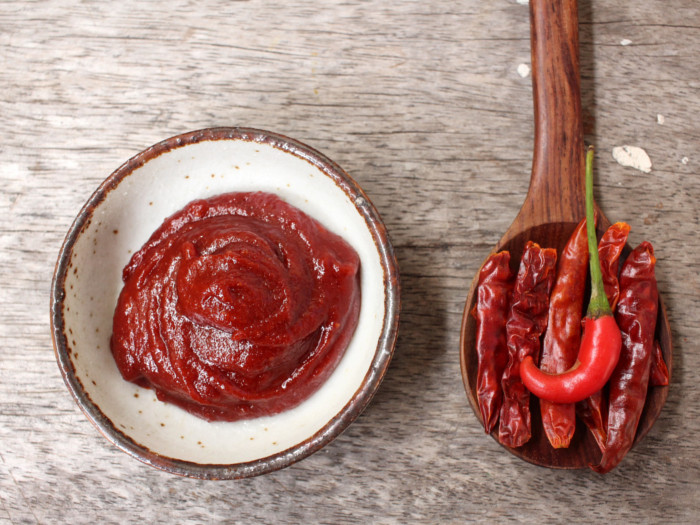While gochujang has been popular in Korea for centuries, possibly as far back as the 9th century, it only made its first appearance in the west about a century ago. But demand for this unique condiment has increased significantly in the past three decades.
What is Gochujang and its History?
Gochujang is a popular Korean condiment with a kick that has had a recent surge in popularity around the world. This fermented, rice-based condiment has a garlic and chili flavor that makes it an ideal sauce for countless dishes, both Korean and otherwise. The original form of gochujang was something akin to a pepper paste, but after the introduction of chili peppers to the region in the 16th century, this Korean staple got a flavorful boost.
Gochujang Ingredients
There isn’t a precise recipe for the preparation of gochujang. But the standard ingredients that can be found in most varieties include fermented soybean paste, red chili powder, glutinous rice, water, garlic, salt and a sweetener, either honey, sugar or corn syrup. Soy sauce and seed malt may be added to some variations, and special types may even include pumpkin, sweet potato, whole wheat kernels or barley. These variations depend on the region where the gochujang is produced, as well as the ingredients available.

Gochujang is a Korean red chili paste. Photo Credit: Shutterstock
Nutrition
A single serving of gochujang, approximately 20 grams, represents 45 calories. The nutritional benefits of gochujang are derived from its base ingredients, although most of them are in small enough quantities that their mineral and vitamin contents are negligible. However, studies have found that this Korean chili paste contains certain probiotics and the compound capsaicin, along with small amounts of fiber, sodium, and protein.
Benefits
Some of the most important benefits of gochujang include its effects on gastrointestinal health, the immune system, energy levels, stress, and cardiovascular health.
Gut Health
A study published in the Korean Journal of Food Preservation found that certain types of gochujang are able to protect against the symptoms of colitis. The presence of probiotics in the fermented soybean is known to stimulate healthy gut flora and improve digestive processes. [1]
Immune System
Capsaicin is an active ingredient in chili peppers and is known to stimulate the immune system and helps to flush toxins from the body.
Energy Levels
The active ingredient in chili peppers has also been linked to boosting the speed of the metabolism and increasing energy levels. A study conducted at Cambridge also found that adding capsaicin to the diet helped to decrease weight gain after moderate amounts of weight loss. [2]
Cardiovascular Health
Some animal studies have revealed that a capsaicin-rich diet lowers the risk of atherosclerosis, cardiac hypertrophy, and hypertension. But in terms of human studies, additional research is required. [3]
Uses
The best thing about gochujang and a big reason for its recent popularity is how versatile it can be. It adds an excellent splash of spice to proteins like steak, chicken, and fish, and is also great in dishes with mushrooms or other vegetables with strong flavors. Adding it to hot soups and stews can be the perfect level of heat, or mix it into marinades and dressings. It is always better to start with a small dollop and add as necessary; certain varieties of gochujang can pack quite a punch, even with garlic, soy sauce, honey or other sweeteners.
Letting this condiment soak into tofu or adding it to Korean barbecue dishes is a great way to keep people coming back for more!
